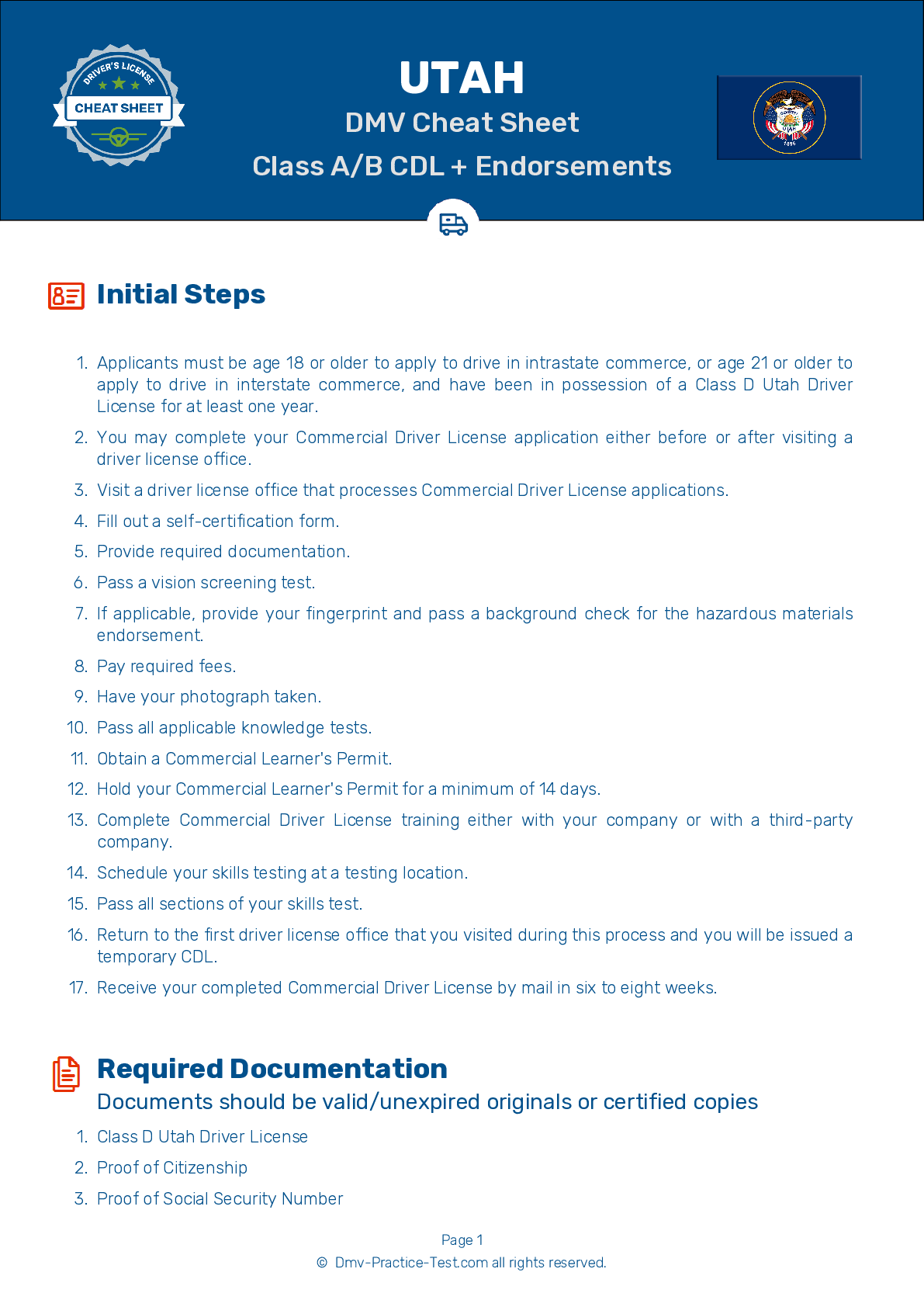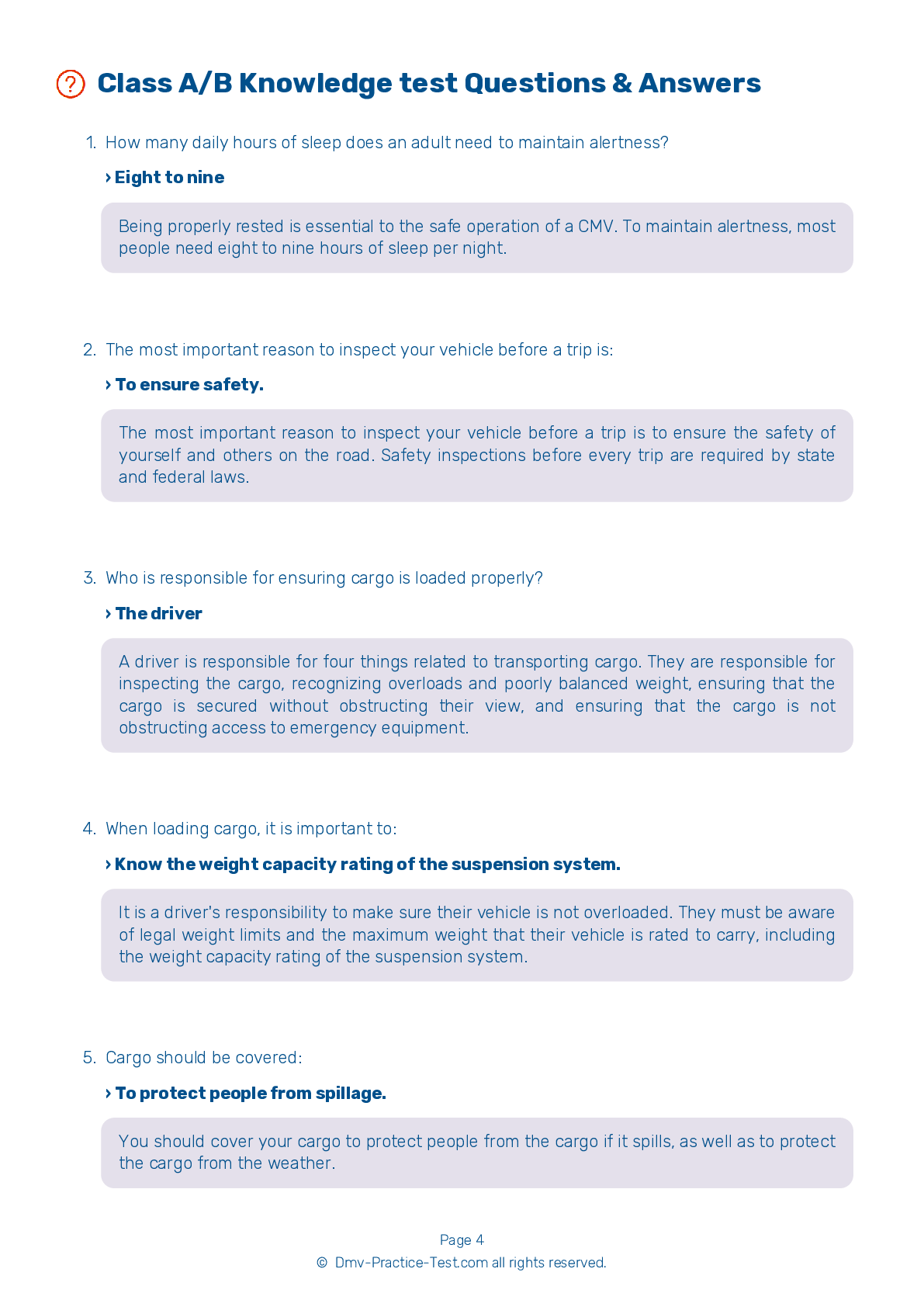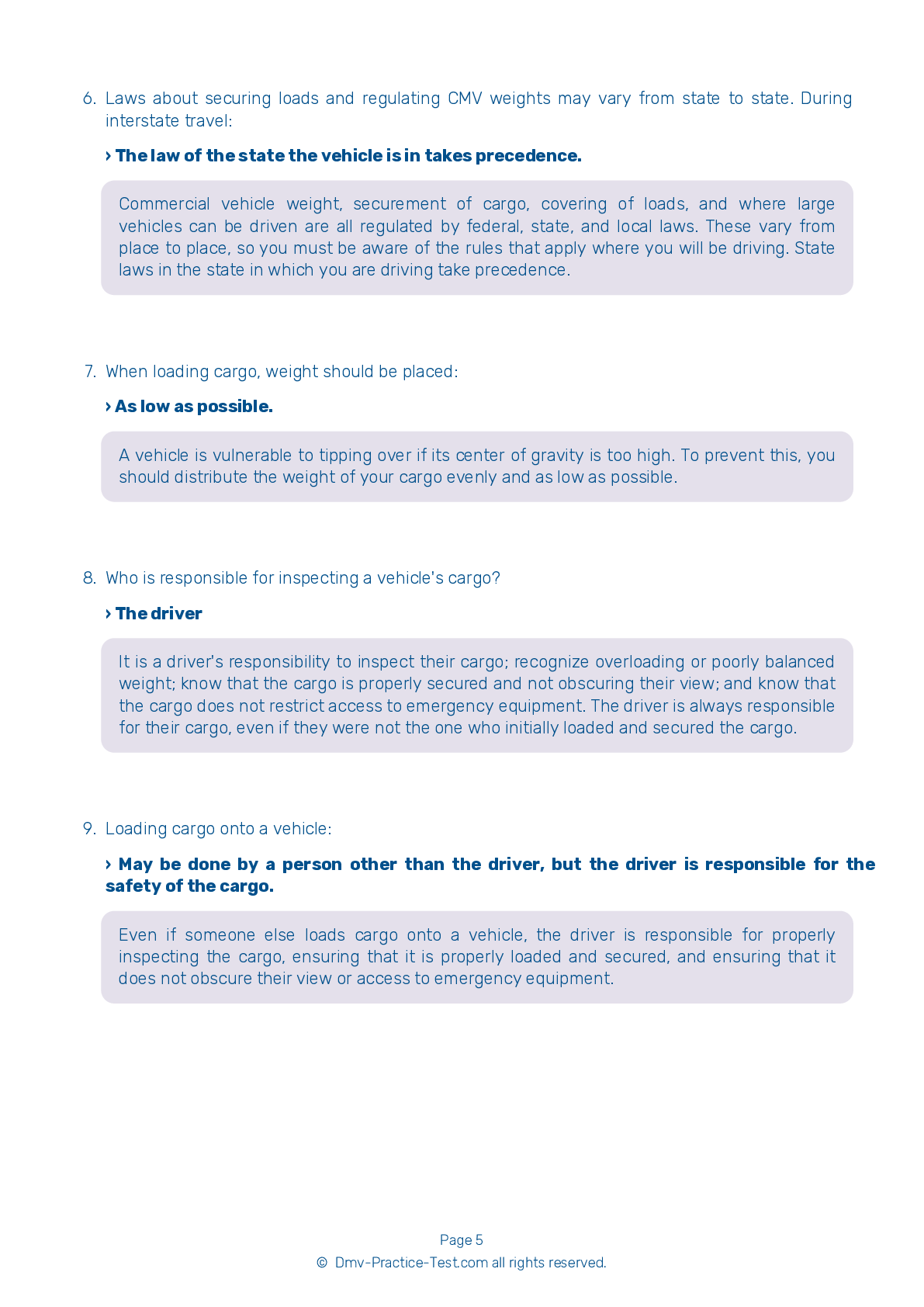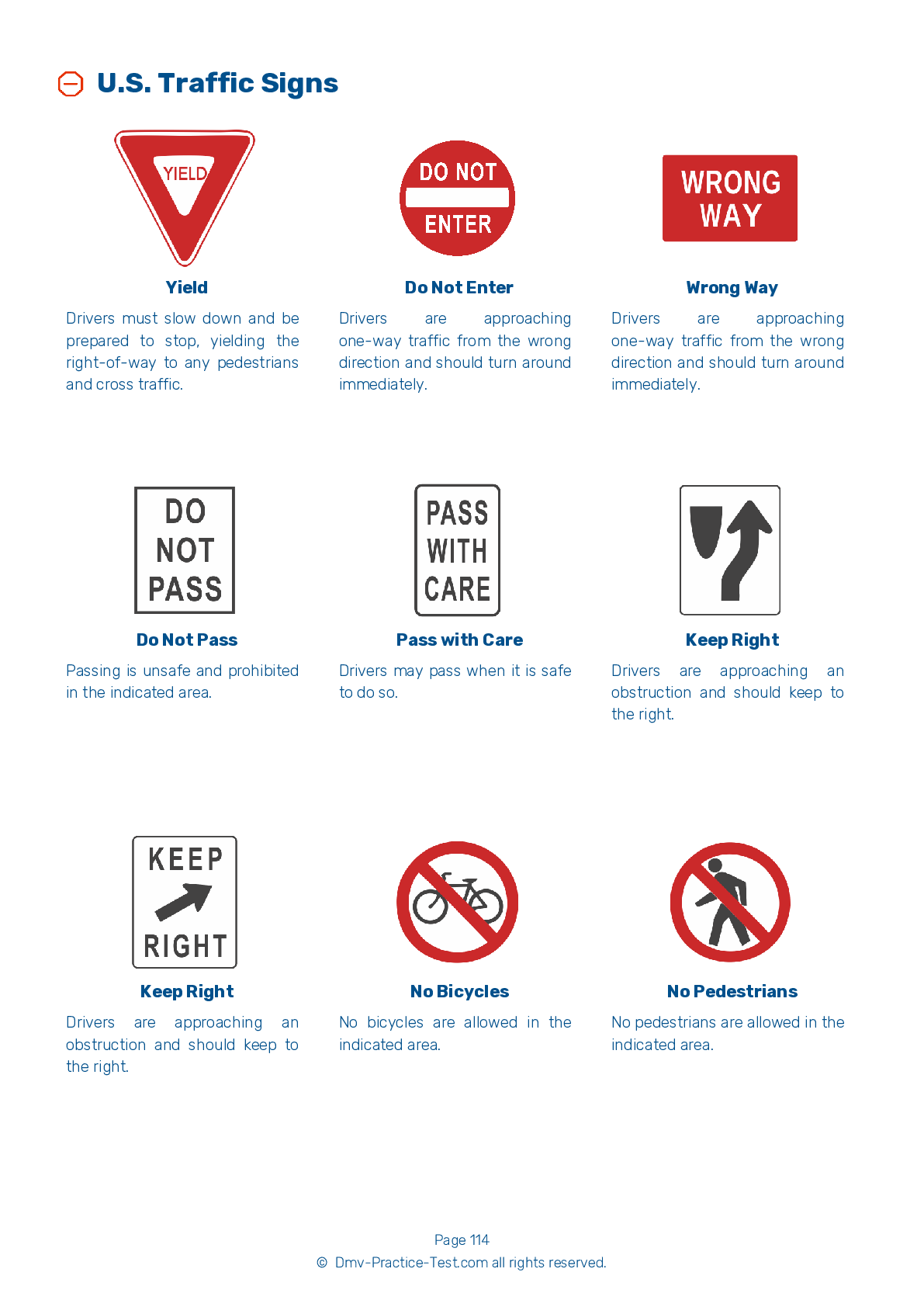Class B Driving Test | Utah 2025 #2 Page 5 of 7
Train for FREE online with our Utah class B license test. The official exam test consists of several obligatory parts, with all of them checking your knowledge of different blocks of road rules. If you need to obtain a UT CDL class B permit in 2025, practice as much as possible. Free sample tests published on our website will help you check and improve your knowledge and boost your grades. Please bear in mind that CDL class B requirements may vary from state to state.
29 . When stopping a manual transmission vehicle, what should you do when the engine is close to idle?
When stopping a vehicle with a manual transmission, you should push in the clutch when the engine is close to idle.
30 . When checking the air and electrical lines during a vehicle inspection, all of the following should be true, except:
When examining the air and electrical lines as part of your vehicle inspection test, you must listen for leaks. Ensure that the air hoses and electrical lines are not cut, chafed, spliced, or worn. Make sure air and electrical lines are not tangled, pinched, or dragging against tractor parts.
31 . If trying to correct a drive-wheel braking skid, the driver should:
To correct a drive-wheel braking skid, you should first remove pressure from the brake pedal to allow the locked wheels to begin rolling again. Quickly steer in the direction you want to go, then countersteer to prevent your vehicle from skidding in the opposite direction.
32 . Noting the road speed is one way to determine when to upshift.
There are two indicators that determine when you need to shift into a higher gear. One indicator is the engine speed (rpm). You should read your vehicle's manual to learn its rpm range and shift up when you reach the top of that range. The other indicator is road speed (mph). You should learn which speeds each gear can accommodate, then keep an eye on the speedometer and shift up as needed.
33 . To inspect slack adjusters on S-cam brakes, you need to:
Check each slack adjuster after parking on level ground, setting wheel chocks, and disengaging the parking brake. Pull the slack adjusters to make sure they do not move more than about one inch from where the push rod is attached. If they move more than one inch, they may be out of adjustment and will need to be fixed.
34 . Tires of mismatched sizes:
Having tires of mismatched sizes on a vehicle is a problem that should be fixed if discovered during a vehicle inspection.
35 . The most important reason to do a pre-trip inspection is that it helps ensure safety.
The most important reason to inspect your vehicle before a trip is to ensure the safety of yourself and others on the road.
See the exact questions that will be on the 2025 Utah DMV exam.
99.2% of people who use the cheat sheet pass the FIRST TIME
Lillian MCcranie explains how our CDL study guide was helpful in passing the exam and recommends it to everyone.
Cameron tells us how he purchased the CDL exam, and found it to be a useful tool which helped him pass the exam and find a job.



